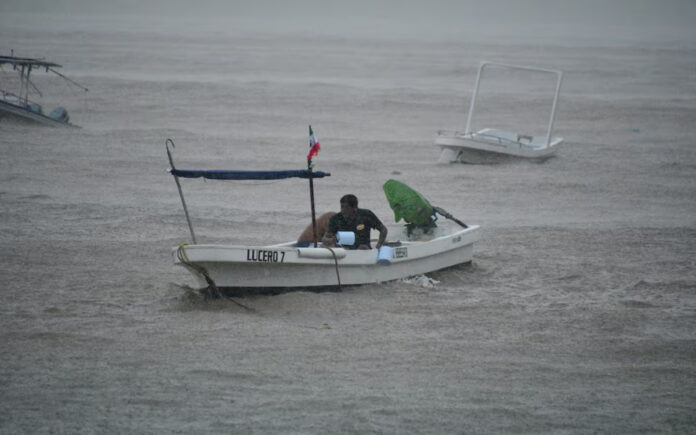Mexico City: Hurricane John re-strengthened on Thursday, unleashing heavy rainfall along Mexico’s southwestern coast, home to numerous ports and popular tourist destinations. This area has already been battered for several days by the slow-moving storm system.
Since Monday, John has lingered near the coastline, fluctuating between weakening and strengthening. The storm has caused significant disruptions, including the temporary closure of major cargo ports, the suspension of local airport operations, and the tragic loss of at least five lives—primarily due to mudslides.
AccuWeather meteorologist Jesse Ferrell referred to John as a “zombie” storm, a term used to describe storm systems that dissipate and later regenerate. The phrase was first popularized by the U.S. National Weather Service in 2020 when the remnants of Storm Paulette reformed near the Azores after striking Bermuda.
In 2004, Hurricane Ivan followed a similar path, lasting nearly a month. Ivan devastated the Caribbean before dissipating, only to reemerge and strike the United States, causing $26 billion in damage that year.
Christopher Rozoff, an atmospheric scientist at the National Center for Atmospheric Research, explained that John’s slow pace and lack of large-scale steering forces contributed to its unpredictable trajectory. “This makes it prone to reintensifying over the sea and further tormenting Mexico’s coast with extreme rainfall,” Rozoff said.
Also Read | Harris Vows Support for Ukraine, Denounces ‘Surrender’ Talks in Washington
As of Thursday evening, Hurricane John had sustained winds of 75 miles per hour (121 kph) and was moving slowly northwest, just off the coast of Michoacán state, according to an advisory from the U.S. National Hurricane Center. The center, based in Miami, warned that the storm is likely to remain a hurricane as it tracks along the coastline, possibly moving inland and continuing to dump heavy rain through at least Saturday.
A hurricane warning remains in effect for much of Michoacán’s coastline and parts of neighboring Guerrero, which was already hit by John earlier in the week. That strike uprooted trees, cut power to tens of thousands, and triggered fatal landslides that destroyed homes.
Also Read | Helene Strengthens to Major Hurricane, Threatens Deadly Flooding in Florida
Guerrero’s governor, Evelyn Salgado, urged residents to remain vigilant on Thursday, a day after storm surges battered beachside restaurants in Acapulco—one of the state’s top resort destinations. Nearby roads were also flooded. Acapulco is still recovering from the destruction caused by Hurricane Otis last year.
“This heavy rainfall will likely cause significant and catastrophic life-threatening flash flooding and mudslides,” warned the U.S. National Hurricane Center.
Also Read | Devastation Ahead: Hurricane Helene Makes Landfall, Threatening Lives and Properties
AccuWeather lead hurricane expert Alex DaSilva noted that both John and Otis underwent rapid intensification due to unusually warm sea temperatures. In some regions where John developed, waters reached up to 32°C (90°F), providing ample energy to fuel the storms.
Andra Garner, a meteorologist at Rowan University, added that these warm ocean temperatures likely played a role in John’s ability to regenerate after making its initial landfall. DaSilva further warned that rising sea surface temperatures in the future could lead to more frequent episodes of rapid storm intensification.



